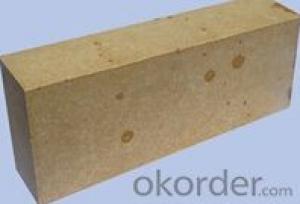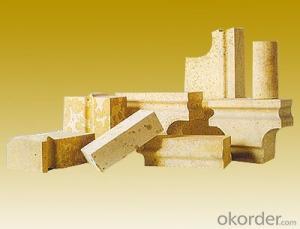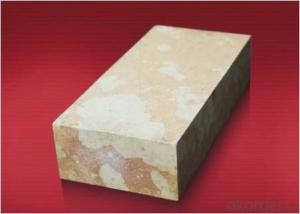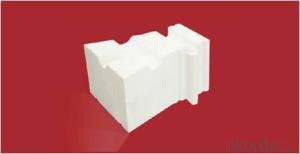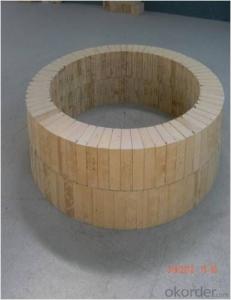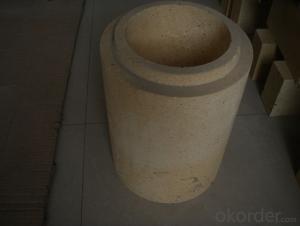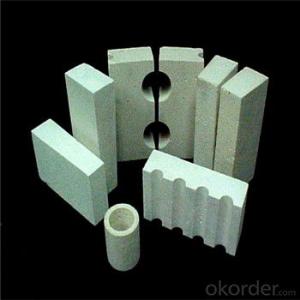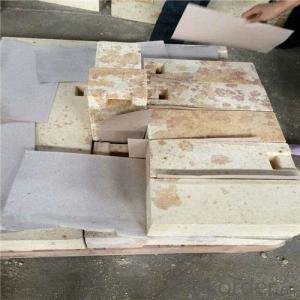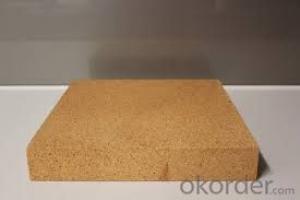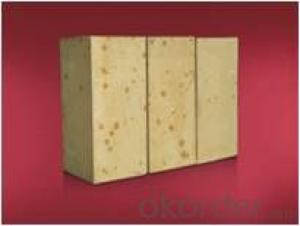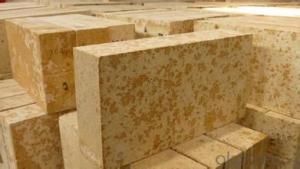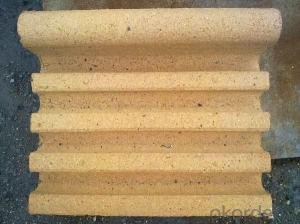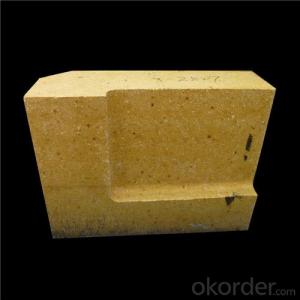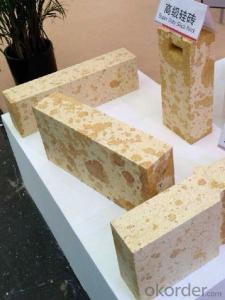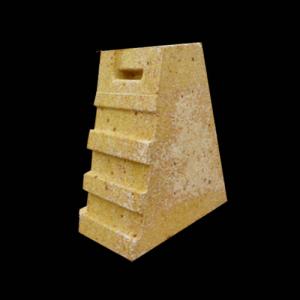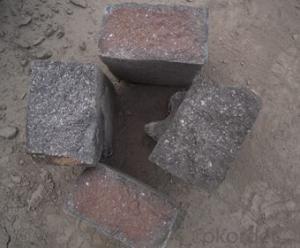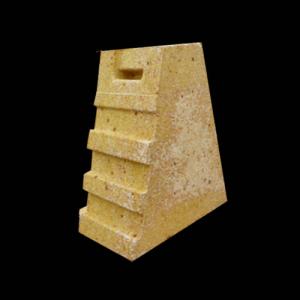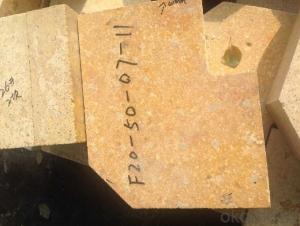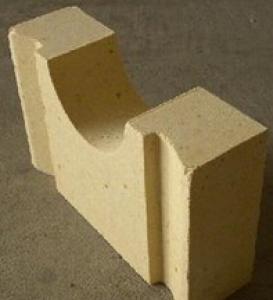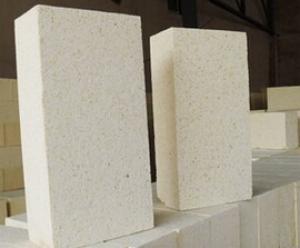Alumina Silicate Fire Brick for Glass Furnace Silica Refractory
- Loading Port:
- China Main Port
- Payment Terms:
- TT OR LC
- Min Order Qty:
- -
- Supply Capability:
- -
OKorder Service Pledge
OKorder Financial Service
You Might Also Like
Specifications
silica refractory brick with high CCS, stable performance,
good package and delivery on time
Product name:silica refractory brick for glass furnace
Chemical and physical specification:
| specification | machine pressed | checkers&handmade |
chemical analysis Al2O3 % max SiO2 % min Fe2O3% max alkalies % max TiO2 % max CaO % max free quartz % max |
1 95 1 0.2 0.2 3 1
|
1 95 1 0.2 0.2 3 1
|
bulk density kg/m3 min true density kg/m3 max | 1800 2340 | 1750 2340 |
| apparent porosity % max | 21 | 23 |
cold crushing strength mpa min | 30
| 20
|
permanent linear change % max 1500℃/4hr | 0.2 -0.2 | 0.2 -0.2 |
| creep 1500℃/20-50hr/0.2N/MM2 % max | 0.2 | 0.2 |
refractoriness under load 0.2n/mm2 0.5% ℃ min 2.0% ℃ min 5.0% ℃ min |
1530 1600 1600 |
1530 1600 1600 |
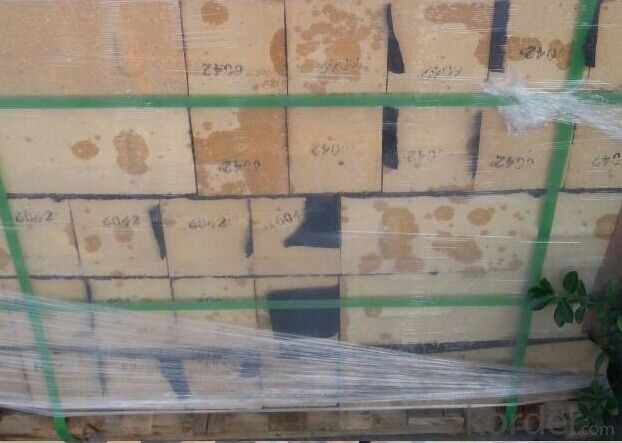
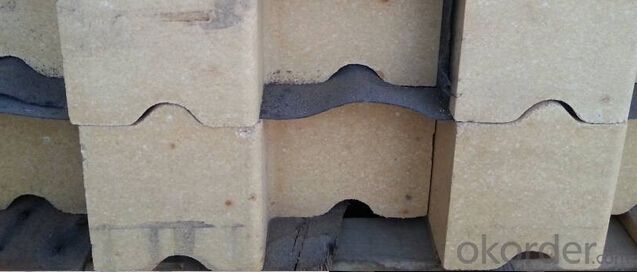
- Q: Because of the recent relates to this industry, by way of learning to name for all raw materials, I hope knowledgeable friends exhibitions, thank you.
- Acidic materialMainly siliceous materials, such as quartz, tridymite and cristobalite, chalcedony, flint, opal, white quartzite, silica sand, diatomaceous earth, silicon oxide contained in these siliceous materials (SiO2) at least 90%, pure raw materials are silicon oxide as high as 99% or more. Siliceous materials at high temperature is the acidic nature of chemical dynamics, when the presence of metal oxide, or when in contact with the chemical reaction, and combined with a fusible silicate. Therefore, if there is a small amount of metal oxide in siliceous material, it will seriously affect its thermal resistance.
- Q: Common bond brick?
- When adding ingredients, the amount of lime added shall be converted to CaO, and the amount of addition varies depending on the product, usually fluctuating at 1.5~2.5%. For example, the production of coke oven silica brick, the dosage of CaO is 2.0~3.0%; the production of electric furnace top brick, the dosage of CaO is 1.4~1.75%.
- Q: The specific content is what gb/t2608-2012 brick
- The provisions of the brick classification, technical requirements, test methods,
- Q: Semisilica brick, clay brick, high alumina brick and what is the difference?
- This is a kind of refractory material is divided into three types: semisilica brick (A12O315 ~ 30%), clay brick (A12O330 ~ 48%), high aluminum brick (A12O3>48%).
- Q: How to judge the quality of brick, clay brick, high alumina brick furnace from the appearance?
- Mainly from the impurities to determine how much, generally less impurity single color brick.
- Q: The high thermal conductivity of silica brick and traditional brick what is the difference?
- Brick, high thermal conductivity has been greatly improved in terms of morphology, crystal structure, physicochemical index. The structure and morphology of high thermal conductivity of silica brick,Structure and morphology of high thermal conductivity and the traditional brick brick magnified 20 times were compared, high thermal conductivity silica pore size distribution is more uniform and finer.
- Q: Common bond brick?
- Manufacturing for silica brick binder hi-li sulfate pulp waste liquid and lime milk. When lime milk is used as a bond, it acts as a plasticizer. To increase the strength of lime brick in the drying process, as mineralizer in the firing, promote the transformation of quartz.
- Q: What are the main constituents of refractory bricks?
- (a) containing refractory brick brick, refers to more than SiO293%, is the main varieties of acid resistant brick. It is mainly used for coke oven building, also used in furnaces all kinds of glass, ceramic and carbon calciner, refractory brick arches and other load-bearing parts, is also used in high temperature bearing part of hot blast stove, but should not be used in thermal equipment below 600 DEG C and the temperature fluctuation in the.
- Q: Physical solid waste disposal
- The amount of addition is related to the shape and weight of the brick. The bricks can be added to 20% weight less than 25kg; bricks above 25kg can be added to 30%; for the specific type of brick can be added 30%. into waste silica brick should pay attention to this problem
- Q: Such purpose and scope please give me detailed points thank you
- Mainly used for coke oven carbonization chamber and the combustion chamber wall, open hearth furnace regenerator and a sediment chamber, soaking furnace, glass furnace, refractory materials and ceramic brick kiln, kiln vault and other load-bearing parts. Also used for high temperature bearing part of hot blast stove and acid open hearth furnace.
Send your message to us
Alumina Silicate Fire Brick for Glass Furnace Silica Refractory
- Loading Port:
- China Main Port
- Payment Terms:
- TT OR LC
- Min Order Qty:
- -
- Supply Capability:
- -
OKorder Service Pledge
OKorder Financial Service
Similar products
Hot products
Hot Searches
